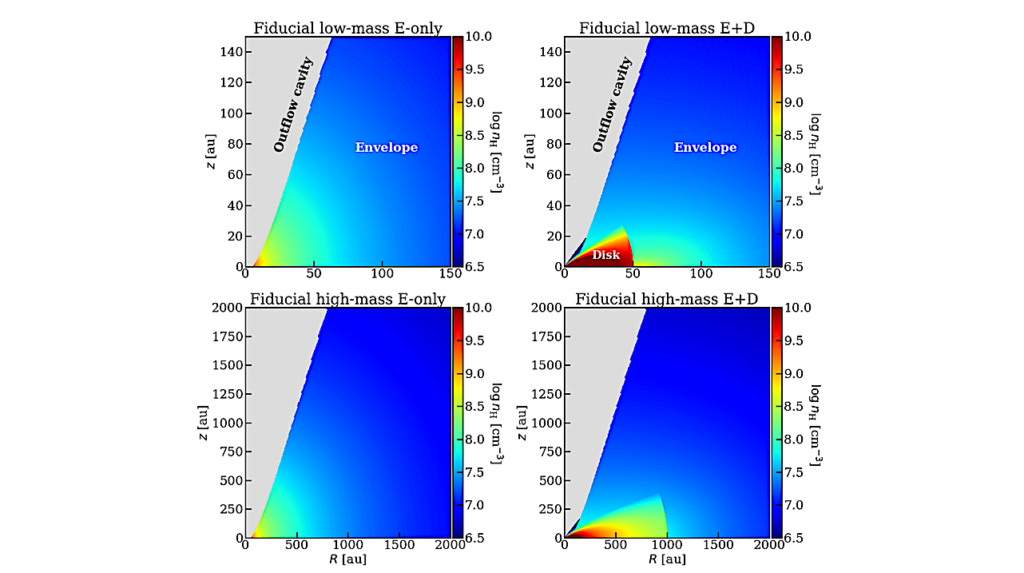H2O Distribution In The Disc Of HD 100546 And HD 163296: The Role Of Dust Dynamics And Planet–Disc Interaction

Far-infrared observations with Herschel revealed a surprisingly low abundance of cold-water reservoirs in protoplanetary discs. On the other hand, a handful of discs show emission of hot water transitions excited at temperatures above a few hundred Kelvin.
In particular, the protoplanetary discs around the Herbig Ae stars HD 100546 and HD 163296 show opposite trends in terms of cold versus hot water emission: in the first case, the ground-state transitions are detected and the high-J lines are undetected, while the trend is opposite in HD 163296. We performed a spectral analysis using the thermo-chemical model DALI. We find that HD 163296 is characterised by a water-rich (abundance ≳10−5) hot inner disc (within the snowline) and a water-poor (<10−10) outer disc: the relative abundance may be due to the thermal desorption of icy grains that have migrated inward. Remarkably, the size of the H2O emitting region corresponds to a narrow dust gap visible in the millimeter continuum at r=10au with ALMA. The low-J lines detected in HD 100546 instead imply an abundance of a few 10−9 in the cold outer disc (>40 au). The emitting region of the cold H2O transitions is spatially coincident with that of the H2O ice previously seen in the near-infrared. Notably, millimetre observations with ALMA reveal the presence of a large dust gap between nearly 40 and 150 au, likely opened by a massive embedded protoplanet. In both discs, we find that the warm molecular layer in the outer region (beyond the snow line) is highly depleted of water molecules, implying an oxygen-poor chemical composition of the gas. We speculate that gas-phase oxygen in the outer disc is readily depleted and its distribution in the disc is tightly coupled to the dynamics of the dust grains.
L.M. Pirovano, D. Fedele, E.F. van Dishoeck, M.R. Hogerheijde, G. Lodato, S. Bruderer
Comments: Accepted for publication on A&A
Subjects: Earth and Planetary Astrophysics (astro-ph.EP); Solar and Stellar Astrophysics (astro-ph.SR)
Cite as: arXiv:2207.10744 [astro-ph.EP] (or arXiv:2207.10744v1 [astro-ph.EP] for this version)
https://doi.org/10.48550/arXiv.2207.10744
Focus to learn more
Related DOI:
https://doi.org/10.1051/0004-6361/202244104
Focus to learn more
Submission history
From: Davide Fedele
[v1] Thu, 21 Jul 2022 20:38:36 UTC (10,259 KB)
https://arxiv.org/abs/2207.10744
Astrobiology, Astrochemistry,








